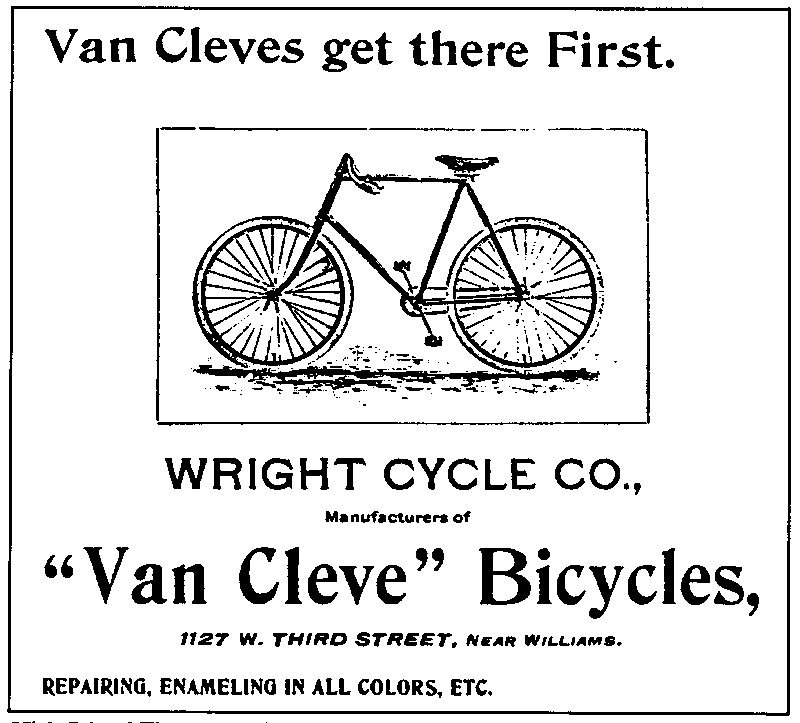The Wrights started doing business in publishing after Orville, with the help of Wilbur, designed and built his own printing press. However, the brothers soon moved on to bicycles, as they wanted to capitalize on the cycling boom of the era. They opened the Wright Cycle Exchange in Dayton, Ohio, in the 1890s. Their business grew steadily and the brothers moved the location six times.

In 1896, the Wrights started to manufacture their own models. First came the “Van Cleve”, then came a less expensive model “St. Clair”, both named after the brothers’ ancestors. They focused on quality rather than numbers. At the peak of their production, they manufactured around 300 bicycles per year. The Van Cleve was priced at $65, the St. Clair cost $42.50.
The brothers were constantly improving their design with time, introducing a self-oiling hub to deal with Dayton’s dusty streets, an internal drum bike activated by cycling backwards, pedals mounted to the crank by threaded posts, and more. The business went well initially, but as the turn of the century approached, the inflow of money started to slow down. The Wrights had to reduce their prices a few times to keep up with the big brands, which were starting to swallow small manufacturers.
The upside of building bicycles was that it was mainly a seasonal business. In the winter, the brothers focused on their other passion – flying. They built a wind tunnel on the second storey of their shop, did meticulous tests and successfully flew the Wright Flyer in 1903. The rest is history. Wilbur and Orville built very few bicycles after that and focused solely on airplanes after 1904. In 1909 they sold the remaining bicycle parts and the rights to the Van Cleve name to W.F. Meyers. He then continued to produce and sell the model until 1939.
Unfortunately, only 5 examples of the Wright bicycles are known to survive till this day.






